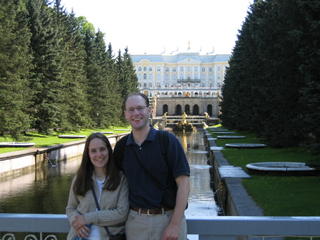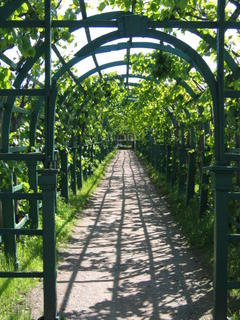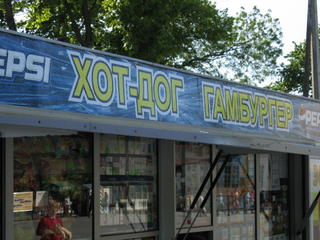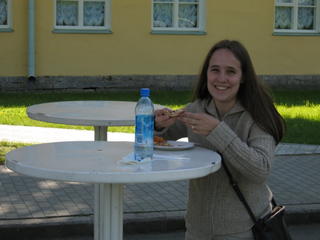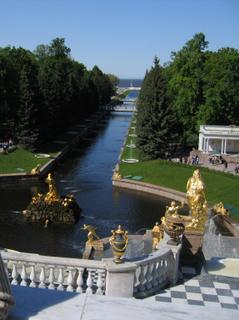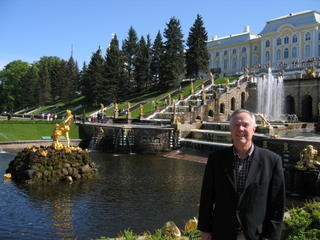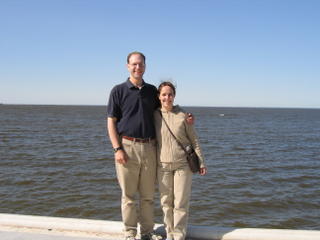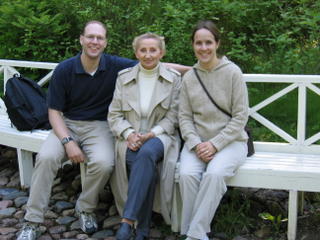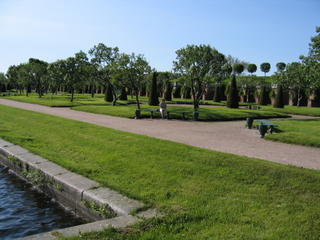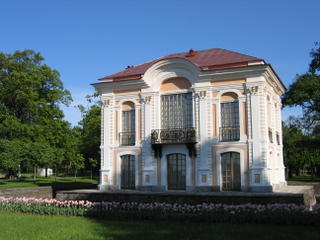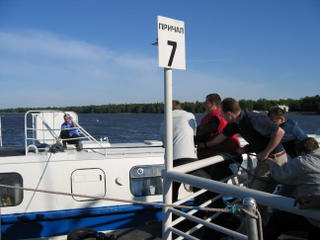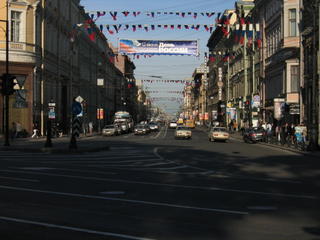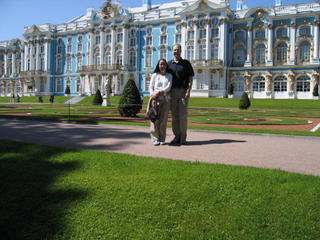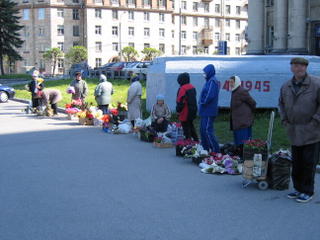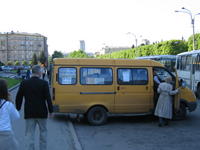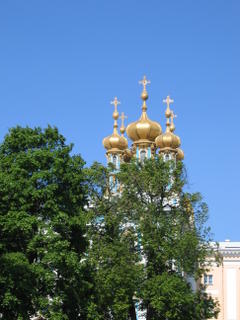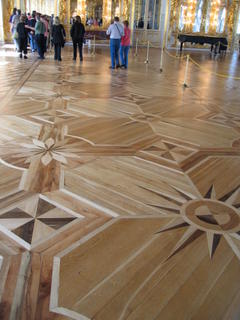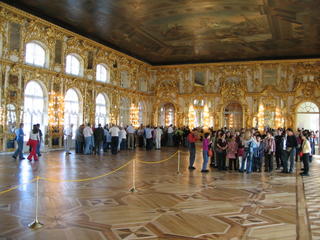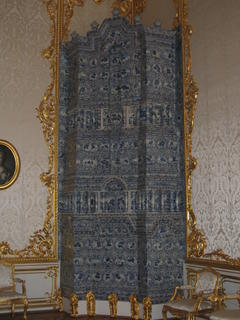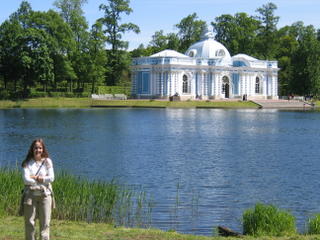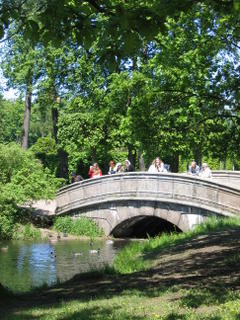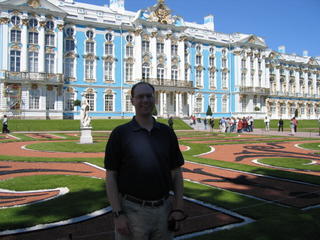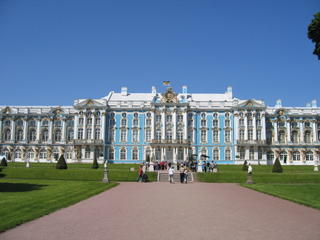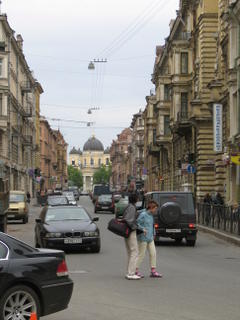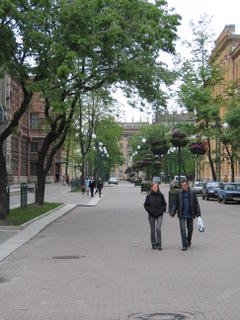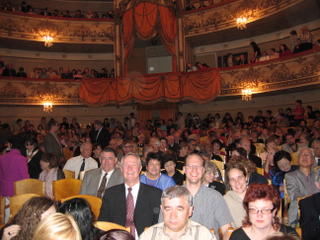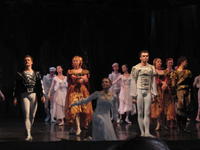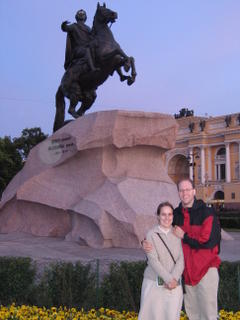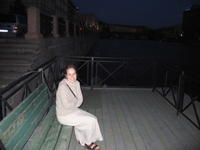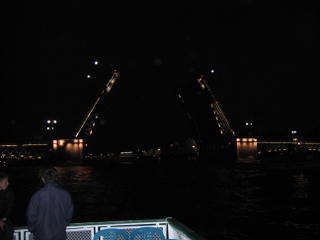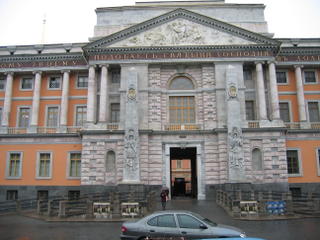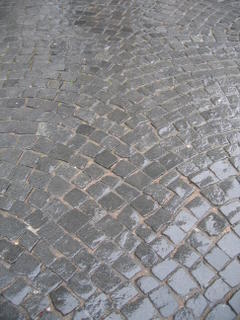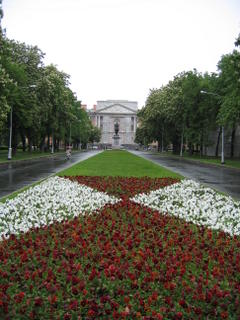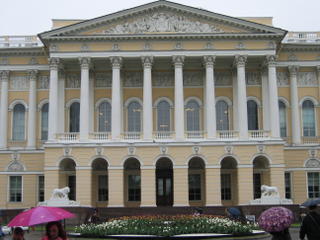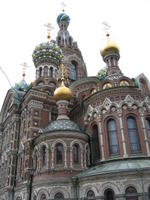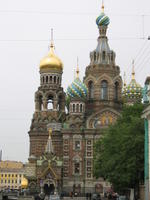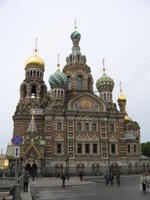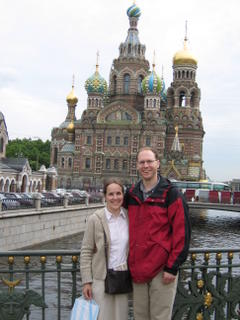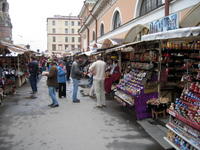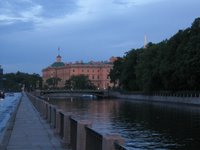
An Early Start
We got home that night around 11 p.m. Around 4 a.m. we woke up and couldn’t g
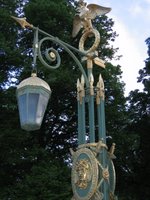 o back to sleep. Saint Petersburg was experiencing the "white nights" when the sky never get completely dark at night, so we decided to get up and go for a walk. This was our last day here and we knew it would be packed full, and I really w
o back to sleep. Saint Petersburg was experiencing the "white nights" when the sky never get completely dark at night, so we decided to get up and go for a walk. This was our last day here and we knew it would be packed full, and I really w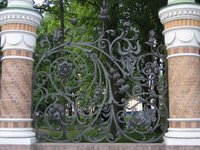 anted to do at least one walk from the book we had. This turned out to be one of my favorite things we did in Saint Petersburg. All these first pictures are just some of the little details that make the city beautiful (I must admit I’m not showing the complete picture, not everything was clean and beautiful, but you’ll have to see those pictures when you come and visit me). We spent 3 1/2 hours doing a walking tour and afterward I felt like I really understood the city. Incidentally, the city
anted to do at least one walk from the book we had. This turned out to be one of my favorite things we did in Saint Petersburg. All these first pictures are just some of the little details that make the city beautiful (I must admit I’m not showing the complete picture, not everything was clean and beautiful, but you’ll have to see those pictures when you come and visit me). We spent 3 1/2 hours doing a walking tour and afterward I felt like I really understood the city. Incidentally, the city 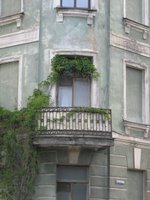 was beautiful at 4:00 a.m., the air cool and crisp with few people out. Very quiet (except for a few night clubs still going strong) and the street cleaners were starting to come out and clean the streets. We tried to go in a few gardens, but found out they aren’t open until 9 or 10 a.m. We later found out why. Any park or garden that was open was littered with trash and beer bottles.
was beautiful at 4:00 a.m., the air cool and crisp with few people out. Very quiet (except for a few night clubs still going strong) and the street cleaners were starting to come out and clean the streets. We tried to go in a few gardens, but found out they aren’t open until 9 or 10 a.m. We later found out why. Any park or garden that was open was littered with trash and beer bottles.The author of our guidebook, David Matlock, explained how the streets of Saint Petersburg are laid out as a series of ensembles and vistas. Buildings were bu
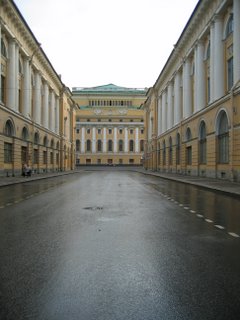 ilt to be harmonious with the others around them and looking down the end of almost every street you end up either with a park or another building, specifically placed there to complete the view. We walked up and down these streets as he described this and told the history of the buildings, their architects and inhabitants. For example, in this is a picture of a view down Rossi Street (named for the architect Carlo Rossi who designed the buildings) to the back of the Pushkin Theater. As Matlock says, "Perfect symmetry rules: the street is 22 meters across, identical to the height of the two long columned buildings, which stretch to a length ten times their height, 220 meters." We then tried to do another walk that told about the gardens, but we had to view them from the outside (fortunately, we had been in them on our first day here).
ilt to be harmonious with the others around them and looking down the end of almost every street you end up either with a park or another building, specifically placed there to complete the view. We walked up and down these streets as he described this and told the history of the buildings, their architects and inhabitants. For example, in this is a picture of a view down Rossi Street (named for the architect Carlo Rossi who designed the buildings) to the back of the Pushkin Theater. As Matlock says, "Perfect symmetry rules: the street is 22 meters across, identical to the height of the two long columned buildings, which stretch to a length ten times their height, 220 meters." We then tried to do another walk that told about the gardens, but we had to view them from the outside (fortunately, we had been in them on our first day here).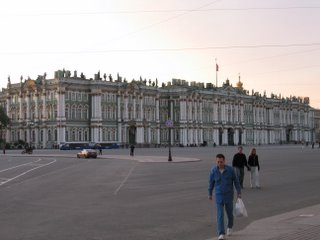 We returned to the hotel just before eight, got ready and had breakfast. At 10:00 a.m. we met Sister Sandburg (the wife of the mission president in Saint Petersburg) at the Hermitage. The Hermitage, formally the winter palace of the czars, now houses perhaps the world’s second greatest art collection after the Louvre (well the Russians would dispute this, they think it’s the world’s greatest). The missionaries in Saint Petersburg volunteer at the museum and so she was able to arrange a private tour for us. This tour was so excellent (not to mention the fact that we didn’t have to wait for an hour to purchase tickets and enter the museum). Misha, a curator at the Museum took us on the tour and Abby, a BYU student who was interning at the museum for a few weeks that summer translated fo
We returned to the hotel just before eight, got ready and had breakfast. At 10:00 a.m. we met Sister Sandburg (the wife of the mission president in Saint Petersburg) at the Hermitage. The Hermitage, formally the winter palace of the czars, now houses perhaps the world’s second greatest art collection after the Louvre (well the Russians would dispute this, they think it’s the world’s greatest). The missionaries in Saint Petersburg volunteer at the museum and so she was able to arrange a private tour for us. This tour was so excellent (not to mention the fact that we didn’t have to wait for an hour to purchase tickets and enter the museum). Misha, a curator at the Museum took us on the tour and Abby, a BYU student who was interning at the museum for a few weeks that summer translated fo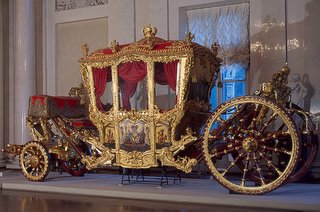 r us. The majority of the art was collected by the czars, and the art collection really can not be separated from their history. We saw the coronation carriage that was used only twice, once by Peter and once by Catherine the Great. (The words I described it with in my journal were "hideously lavish," not hideous in the workmanship, but in the expense). There are two works by DaVinci and a room full of works by Rembrandt. We were also able to see the "Treasure Room," which holds the treasure of the czars, most of it given them by other m
r us. The majority of the art was collected by the czars, and the art collection really can not be separated from their history. We saw the coronation carriage that was used only twice, once by Peter and once by Catherine the Great. (The words I described it with in my journal were "hideously lavish," not hideous in the workmanship, but in the expense). There are two works by DaVinci and a room full of works by Rembrandt. We were also able to see the "Treasure Room," which holds the treasure of the czars, most of it given them by other m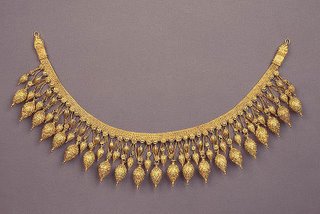 onarchs and kings. In the 19th century archaeologist uncovered Scythian (an early native people) gold work dating from the 7th -4th centuries B.C. Many of the gold pieces had magnifying glasses so you could see the intricate work. This necklace, 4th century B.C. is from the burial complex of a Greek priestess from the mounds at Bolshaya Bliznitsa. (Incidentally I got this picture from their website. And now you too can visit The Hermitage by visiting www.hermitagemuseum.org, the site is very well done, you can take virtual tours, see the outside of the building, look at and read about specific works of art and more.
onarchs and kings. In the 19th century archaeologist uncovered Scythian (an early native people) gold work dating from the 7th -4th centuries B.C. Many of the gold pieces had magnifying glasses so you could see the intricate work. This necklace, 4th century B.C. is from the burial complex of a Greek priestess from the mounds at Bolshaya Bliznitsa. (Incidentally I got this picture from their website. And now you too can visit The Hermitage by visiting www.hermitagemuseum.org, the site is very well done, you can take virtual tours, see the outside of the building, look at and read about specific works of art and more.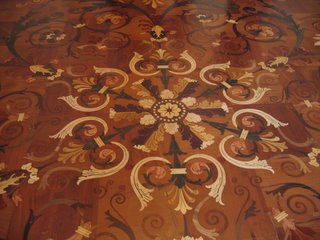
The wood floors here were even more spectacular the Tsarko Selo. In fact Misha said this is the only Museum when the floors are worth more than the collections (tongue in cheek). Misha didn’t have time to show us the room with all the Rembrandts, but pointed us in the direction of the room and said if we wanted we could see it later. When the tour was over it was time for us to meet Brad’s Dad and President Sandburg for lunch, but I really wanted to take just a few minutes and go see some of the Rembrandts. Little did I know that without a tourguide it wasn’t quite so easy to get along. After we walked quickly through the very crowded Rembrandt room we spent 20 minutes trying to find our way back to the coat check. Well, I think this picture by Rembrandt was worth it. It is entitle
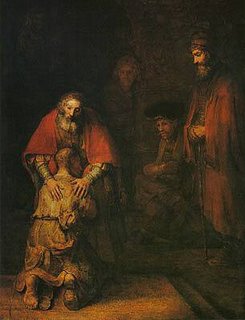 d "The Return of the Prodigal Son." You can form your own opinion of it, but I really like what the Hermitage Website says about it. "The subject comes from the Bible, The Gospel According to Luke, XV: 20-24. The artist had already turned to the theme several times in his graphic works, but in the Hermitage painting, created not long before his death, the painter endowed it with the sense of great tragedy elevated to a symbol of universal significance. Complex emotions are expressed in the figure of the bent old man and his suffering, kneeling son: repentance and charity, boundless love and regret at the belated spiritual awakening. These images represent the summit of Rembrandt's psychological mastery."
d "The Return of the Prodigal Son." You can form your own opinion of it, but I really like what the Hermitage Website says about it. "The subject comes from the Bible, The Gospel According to Luke, XV: 20-24. The artist had already turned to the theme several times in his graphic works, but in the Hermitage painting, created not long before his death, the painter endowed it with the sense of great tragedy elevated to a symbol of universal significance. Complex emotions are expressed in the figure of the bent old man and his suffering, kneeling son: repentance and charity, boundless love and regret at the belated spiritual awakening. These images represent the summit of Rembrandt's psychological mastery." Yes, we really didn’t spend enough time here, but of course, now I have a reason to go back.
